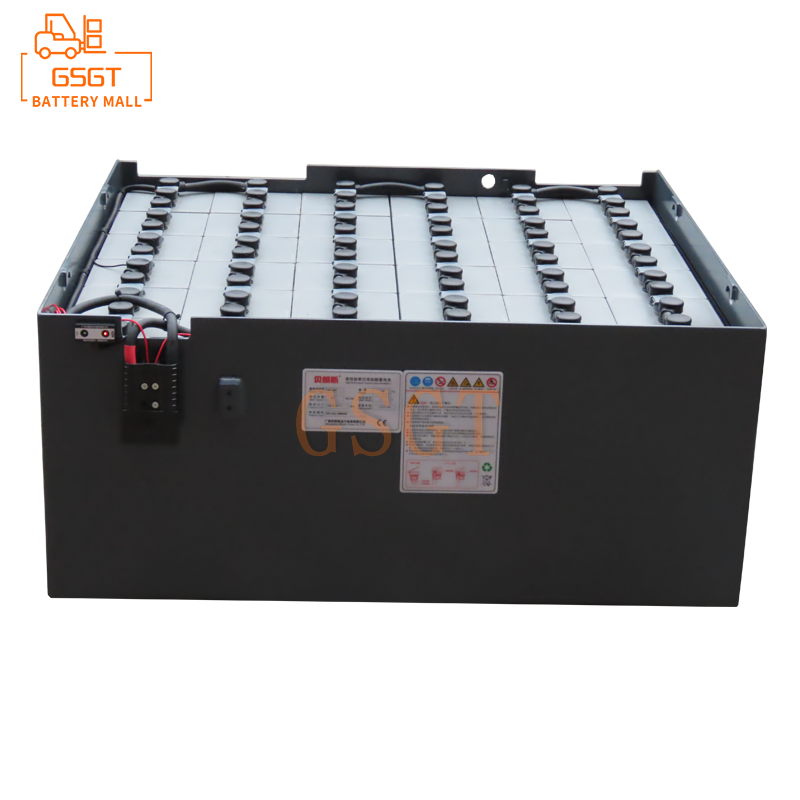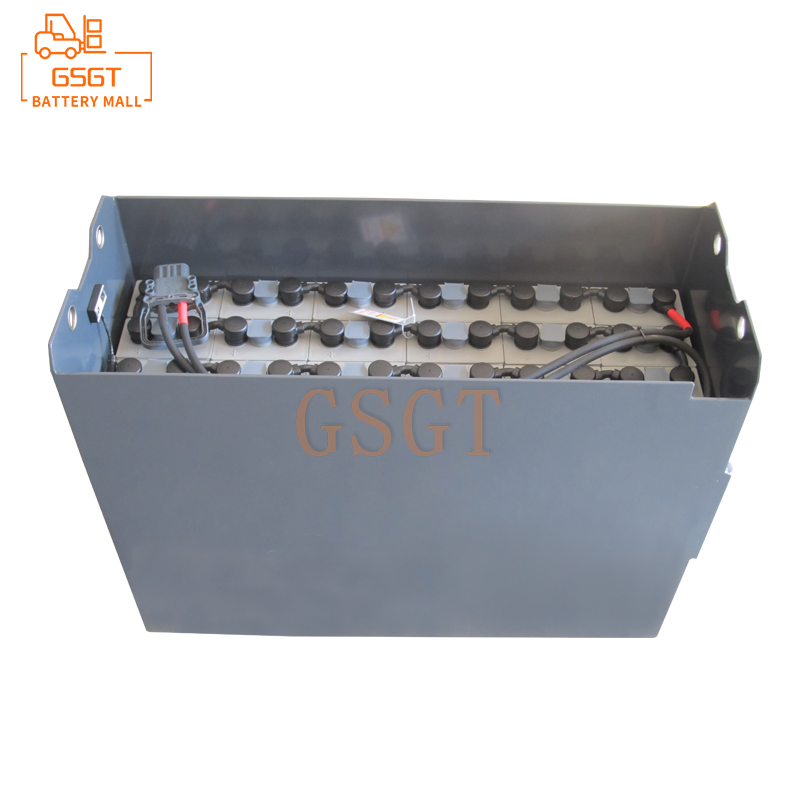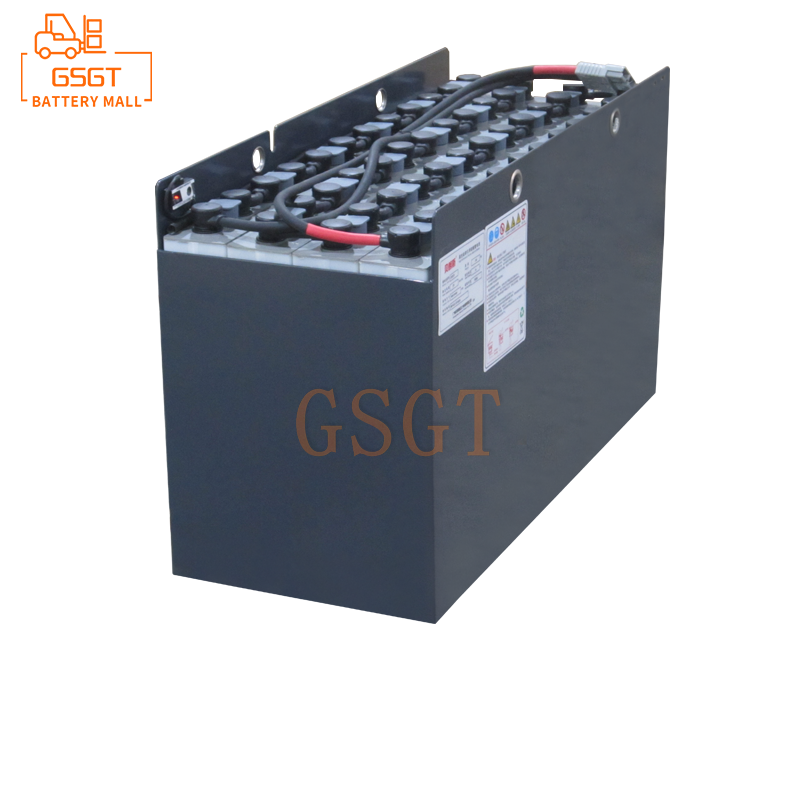Time:2025-04-07 10:53:54
Browse:760
In the daily use of forklift, traction lead-acid battery as a key power source, the correct operation of its charge and discharge is directly related to the performance of the battery, life and operation efficiency of the forklift. The wrong charging and discharging mode will not only cause premature battery damage, increase the operating cost of the enterprise, but also affect the normal operation of the forklift, and even cause security risks. Therefore, it is necessary to deeply understand and master the correct way of charging and discharging lead-acid batteries pulled by forklift trucks.
Preparation before charging
1. Check the battery appearance
Before charging, be sure to conduct a comprehensive appearance check on the battery. Check the battery case for damage, distortion, or leakage of electrolyte. If the shell is broken, the electrolyte may leak, corroding the surrounding devices and posing safety risks. In this case, stop using the shell immediately and contact professional personnel for replacement or maintenance. At the same time, check whether the battery connection terminal is loose, oxidized, or corroded. Loose connections can lead to increased resistance, affect the charging effect, and even cause overheating; Oxidized or corroded terminals may impede current transmission and degrade battery performance. If such a problem exists, use appropriate tools to tighten the connection terminals and clean oxides or corrosion to ensure good connection.
2. Measure the electrolyte level
Traction lead-acid batteries rely on sulfuric acid in the electrolyte to participate in chemical reactions to achieve the conversion of electrical and chemical energy, so maintaining a suitable electrolyte level is crucial. Use a professional level measuring tool, such as a glass tube level gauge, to check the electrolyte level in each cell. Under normal circumstances, the liquid level should be between the upper and lower limits marked on the battery housing. If the liquid level is too low, it may cause the plate to be exposed to air, accelerating plate vulcanization and shortening battery life. At this time, distilled water or special lead-acid battery supplement liquid should be added to meet the requirements, and tap water or other liquid with unknown ingredients should not be added to avoid introducing impurities and affecting the battery performance. Add the electrolyte slowly to avoid electrolyte overflow.
3. Check the charging device
Ensure that the charging equipment used is compatible with the lead-acid battery pulled by the forklift. Different models and specifications of batteries have specific requirements for charging voltage, current and other parameters, and the use of mismatched chargers may lead to overcharge or undercharge of the battery. Check whether the appearance of the charger is intact, and whether the power cord and plug are damaged or broken. After the charger is powered on, observe the display or indicator of the charger to ensure that its parameters are correctly set and can work normally. In addition, it is also necessary to check whether the power supply of the charging place is stable and whether the voltage fluctuation range is within the allowable working range of the charger. An unstable power supply can cause damage to chargers and batteries.
Correct charging procedure
1. Connect the charging line
When making a charging connection, the negative terminal of the charger (black clip) should be connected to the negative terminal of the battery, and then the positive terminal of the charger (red clip) should be connected to the positive terminal of the battery. This connection sequence avoids generating electrical sparks during the connection process and reduces safety risks. After the connection is complete, check again whether the connection is firm and ensure that the clamp is in close contact with the terminal to prevent the poor contact from interrupting the charging process or causing overheating.
2. Set charging parameters
According to the specifications and usage of the battery, set the charging parameters correctly on the charger. In general, the main parameters set include charging voltage, charging current and charging time. For new batteries or batteries that have not been used for a long time, it is recommended to use a small charging current for initial charging to ensure that the battery can be fully activated and extend the service life. In daily charging, the charging current can be reasonably adjusted according to the remaining power of the battery and the required charging time. However, it should be noted that the charging current should not be too large, otherwise it will make the battery heat too fast, accelerate the battery water loss and plate aging. The charging time should also be reasonably estimated according to the actual capacity and charging current of the battery to avoid overcharging or undercharging. Under normal circumstances, the charging time of the lead-acid battery pulled by the forklift is about 6-8 hours, but the specific time needs to be determined according to the actual situation.
3. Start the charging process
After completing the charging line connection and parameter setting, you can start the charger to charge. At the beginning of charging, the working state of the charger and the reaction of the battery can be observed. Under normal circumstances, the charger should show the normal charging current and voltage, and there will be slight bubbles inside the battery, which is the normal gas extraction phenomenon during the charging process. If it is found that the charger display is abnormal, such as the current is too large or too small, the voltage is unstable, or the battery appears violent bubbling, serious heat, etc., should immediately stop charging, check the cause and remove the fault before continuing to charge.
4. Monitoring during charging
The condition of the battery needs to be closely monitored throughout the charging process. Every once in a while, check the temperature of the battery, under normal circumstances, the battery temperature should be between 30℃ -45 ℃. If the temperature exceeds 50 ° C, irreversible damage may be caused to the battery. In this case, reduce the charging current or stop charging, and take appropriate cooling measures, such as ventilation, heat dissipation, and wiping the battery cover with a damp cloth. At the same time, observe the battery electrolyte level. If the liquid level drops too fast, the charging current may be too high or the battery is faulty. Adjust the charging parameters or repair the battery in time. In addition, it is necessary to pay attention to the ventilation of the charging place to avoid the accumulation of hydrogen generated during the charging process, causing safety accidents.
5. Charging ends
When the charger shows that the battery is full or reaches the preset charging time, the charging process is basically complete. However, do not disconnect the charging connection immediately at this time, and let the battery remain in the floating state on the charger for a period of time, generally 0.5-1 hours. Floating charge can make the electrolyte inside the battery fully diffuse, so that the power of each part of the battery is more uniform, which helps to improve the performance and service life of the battery. After the floating charge is finished, turn off the charger power first, and then disconnect the positive clip of the charger in the opposite order to the connection, and then disconnect the negative clip, and finally clean up the charging equipment and the work site.
Precautions in the discharge process
1. Avoid excessive discharge
The discharge depth of lead-acid battery pulled by forklift has significant influence on its life. Excessive discharge will cause excessive consumption of active substances on the battery plate, accelerate plate vulcanization, resulting in reduced battery capacity and shortened life. In general, the depth of discharge of lead-acid batteries pulled by forklifts should not exceed 80%. In actual use, the battery power can be monitored in real time through the power display device of the forklift or the battery monitoring system. When the power is reduced to about 20%-30%, the forklift should be stopped in time and charged to avoid excessive battery discharge.
2. Control discharge current
The size of the discharge current also affects the performance and life of the battery. Excessive discharge current will make the battery heat seriously, aggravate the chemical reaction inside the battery, resulting in damage to the battery plate. Forklifts require different battery discharge currents in different working scenarios, such as no-load driving and full-load lifting. In the process of use, the forklift should try to avoid frequent rapid acceleration, sudden braking and long-term heavy duty operations, which will make the battery instantaneous discharge current is too large. Reasonable planning of forklift operation tasks and smooth operation of forklift help to control discharge current and extend battery life.
3. Regular deep discharge and activation
Although excessive discharge should be avoided, regular deep discharge and activation of lead-acid batteries in forklift traction can help restore part of the battery capacity and improve battery performance. It is generally recommended to carry out a deep discharge every 2-3 months, put the battery power to about 10%-20%, and then carry out a complete charging process, including initial charging, normal charging and floating charging. During deep discharge, pay close attention to the state of the battery to prevent excessive discharge. For long-term idle forklift trucks, the battery should also be regularly charged and discharged to avoid damage due to long-term self-discharge.
The correct charging and discharging mode is the key to guarantee the performance and life of lead-acid battery pulled by forklift truck. From the meticulous preparation before charging, to the standardized operation and close monitoring during the charging process, and then to the reasonable control during the discharge process, each link can not be ignored. Only in strict accordance with the correct way of charging and discharging, in order to ensure that the forklift traction lead-acid battery stable and efficient to provide power for the forklift, reduce the operating costs of enterprises, improve production efficiency.

$3075

$4045

$2040

$1790

MESSAGE
Professional And Efficient
Security
Affordable Price
Professional Services